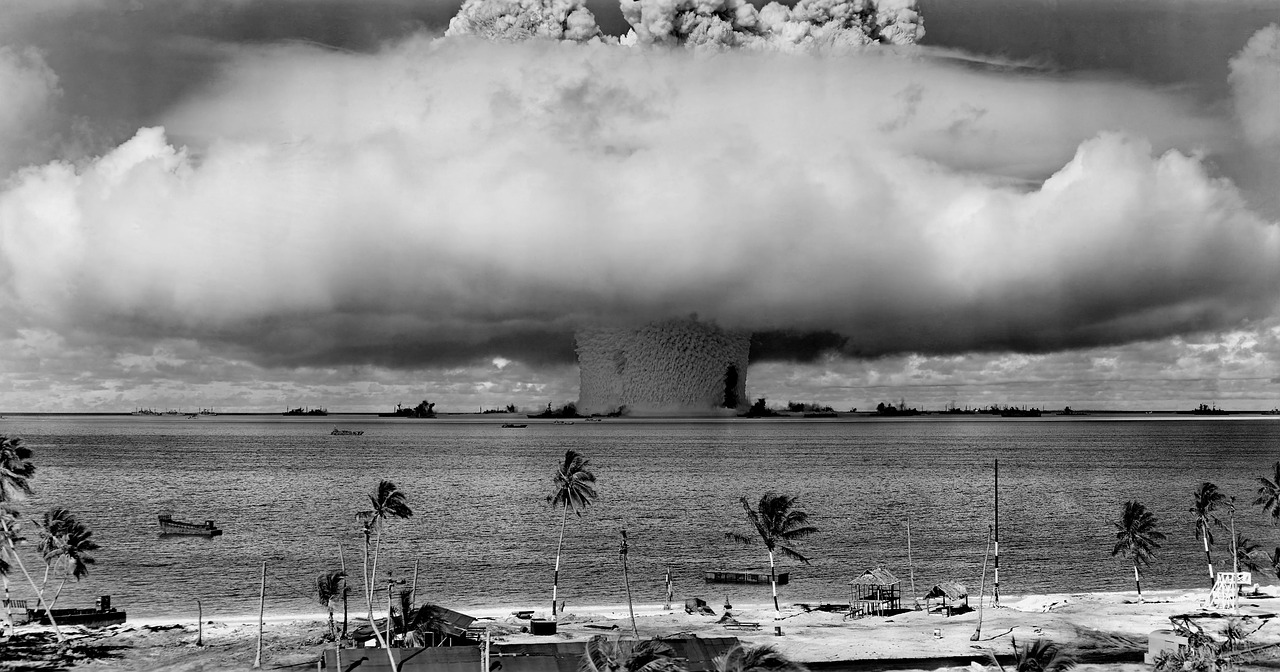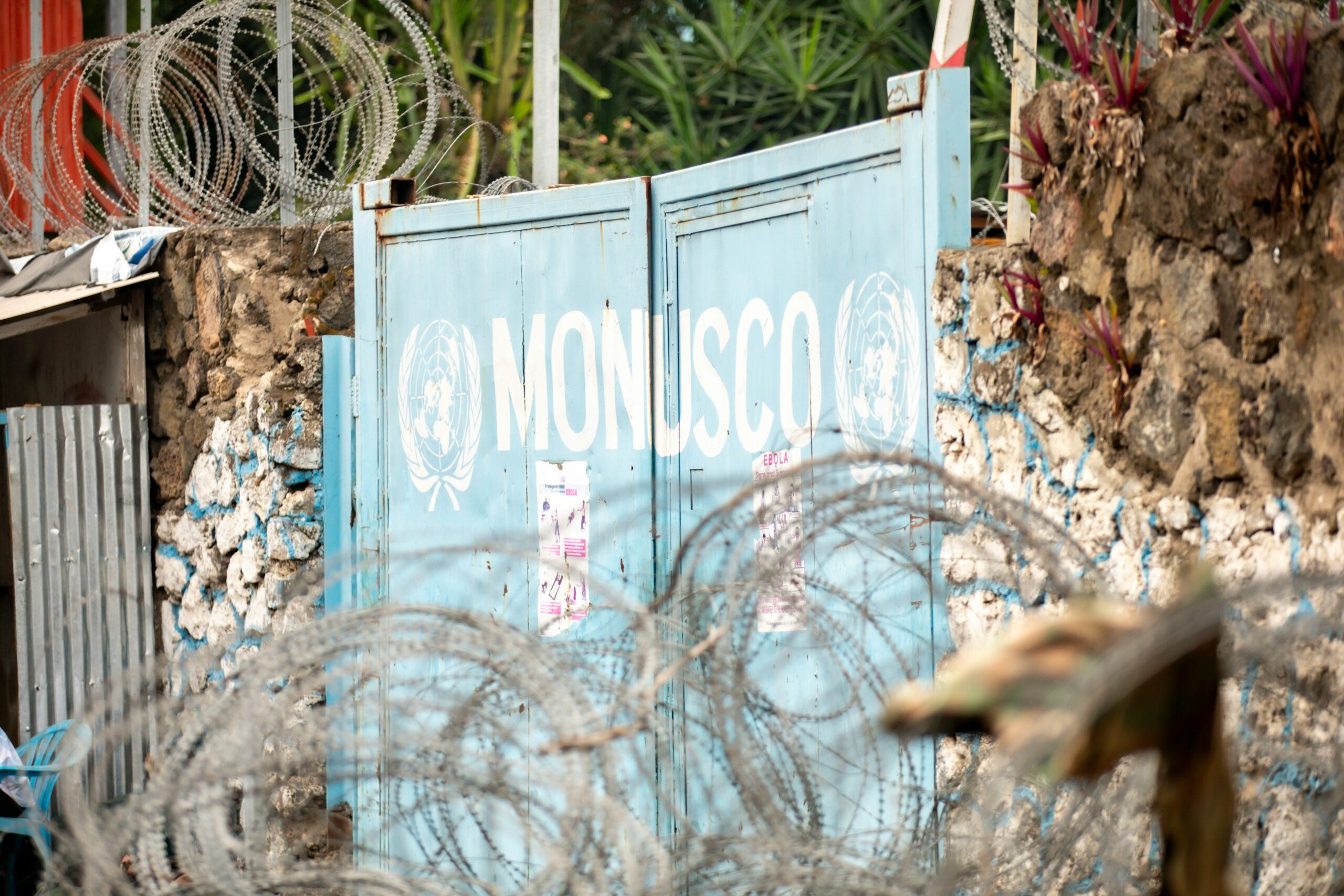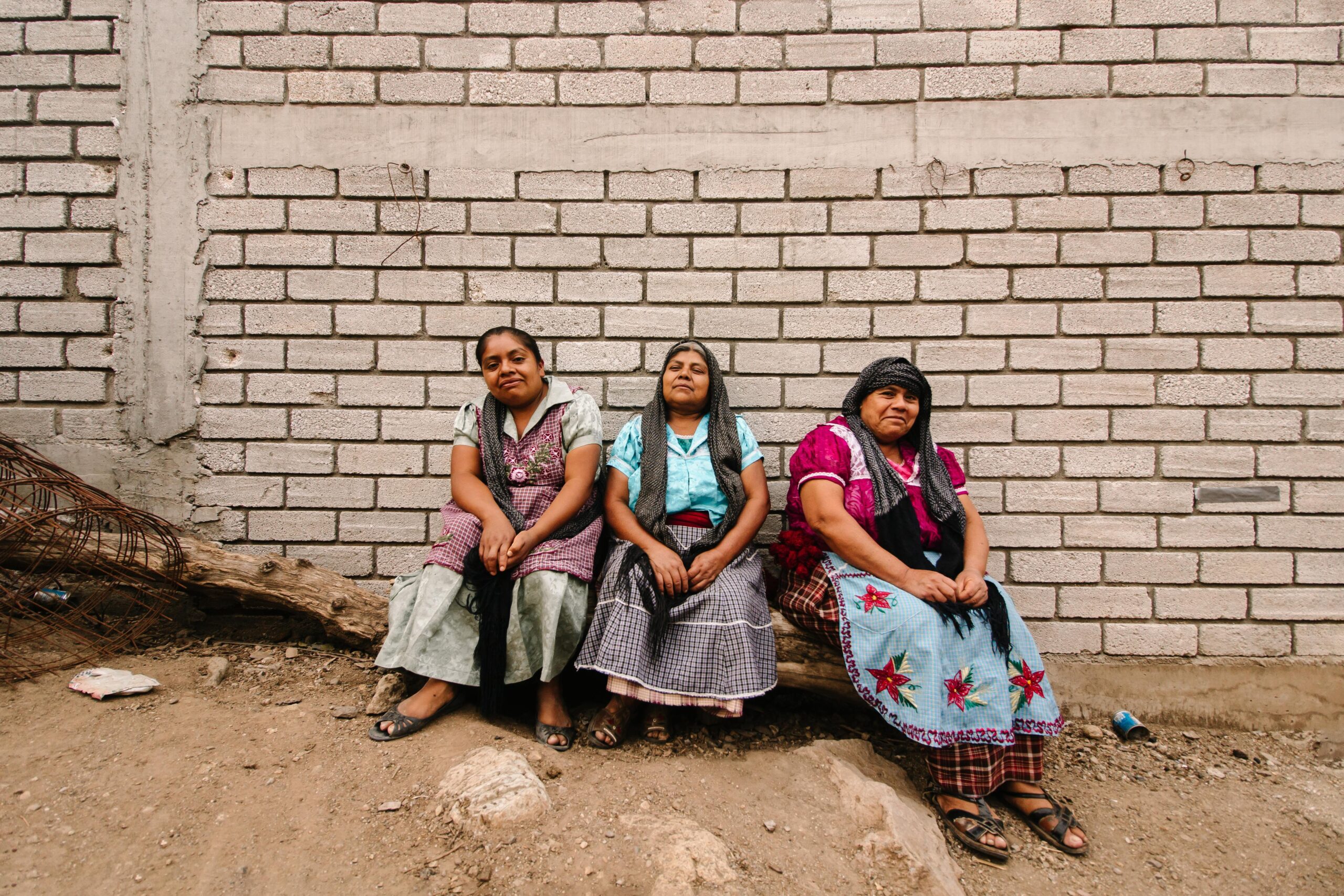By Annabel Gotto
In a 2018 Tweet directed at North Korea’s leader Kim Jong-un, Donald Trump unabashedly declared: “I too have a Nuclear Button, but it is a much bigger & more powerful one than [Kim’s], and my Button works!”. Many were quick to draw suggestive parallels from this almost comical attempted display of machismo. While Trump is known for making outlandish statements, recently declaring his plan to rename the Gulf of Mexico the “Gulf of America”, his approach to nuclear weapons reveals much about the gendered dimensions of nuclear politics. How is it that Trump has come to view and discuss such destructive weapons in this way, and who does this masculinist rhetoric exclude? We must question the accepted, ‘neutral’ language surrounding nuclear weapons and their gendered construction in order to reveal the histories of oppression that lurk beneath its surface.
Language, Gender, and Barbenheimer
Nuclear weapons are integral to traditional understandings of security on the global stage. The arms race of the mid-late 20th century illustrated just how much the possession of nuclear weapons is equated with national strength, with the US and the Soviet Union engaging in a fierce competition to develop more and more destructive weapons at alarming speed. These states appeared to believe that this was a rational, necessary decision. However, the logic that a more stocked nuclear arsenal provides increased security can be seriously questioned. Indeed, the topic of rationality in relation to nuclear weapons warrants further investigation. Feminist analyses of the nuclear weapons development landscape have revealed that feminizing and domesticating bombs allows for the illusion of control, bringing this wildly destructive technology into the realm of that which can be managed and even used as a tool for expressing dominance. This plays off rational-emotional, male-female, and human-nature dichotomies, the consequences of which are long and continued histories of subjugation. These processes of feminisation and domestication are achieved through language, with sanitised and erotic language such as that surrounding “thrust to weight ratios” creating distance between bombs and their deadly consequences and rendering nuclear politics a mere ‘pissing contest’. The tangible consequences of this became clear during the Cuban Missile Crisis of 1962, with leaders’ individual desires to project images of a particular type of masculinity ruling out diplomatic alternatives and pushing the world to the brink of nuclear war.
As Trump’s Tweet highlights, this logic is still dominant. Indeed, nuclear weapons have been so ingrained in the public consciousness as ‘masculine’ that meshing nuclear weapons with the traditionally feminine is seen as comical, almost ridiculous. This was made clear through the Barbenheimer phenomenon. In the summer of 2023, the two films Oppenheimer, following the development of the atomic bomb, and Barbie, a journey into the hot pink world of the doll Barbie, were released on the same day, prompting the juxtaposition of these two films and their cinematic universes through a series of memes and videos such as that below. The shock value gained through the ‘incompatible’ pairing of nuclear weapons with the hyper-feminine reveals the implicit association made between nuclear weapons and masculinity. Recognising this association is the first step in potentially challenging these ideas.
Source: https://www.reddit.com/r/blursedimages/comments/12xh3gi/blursed_barbie/
Nuclear Colonialism and Dispensable Lives
Looking at nuclear testing reveals who these ideas of masculinity and domination have worked to disadvantage. The drive to develop more weapons, fuelled by competitive machismo, led to nations like the US, the USSR, the UK and France being faced with the dilemma of where to test their bombs. One of the regions chosen by the US and the UK was the Pacific. Part of Kiribati, the island of Kiritimati was a British colony until 1979, and was subject to 40 nuclear blasts in the years between 1957 and 1962. The consequences of this were devastating, with many locals, including babies and children, dying of radiation-induced cancers. The tests also had significant negative effects on women’s reproductive health. Testing extended to other places like Bikini Atoll, where the local population experienced similar horrors. Tests like these have been labelled ‘nuclear colonialism’, with the ability of states like the US and the UK to view the lives of the islands’ inhabitants as dispensable reflective of colonial systems of ‘othering’. We must interrogate these connections to broader systems of oppression and the violent wider world of nuclear weapons, with states’ desire to get ahead coming at the expense of real human lives, including those of their own soldiers.
In a time of increasing geopolitical tensions, nuclear weapons remain on the radar. Looking at the construction and history of nuclear weapons reveals the need to recognise and question, or ‘deneutralise’, the dominant logics surrounding nuclear politics and our implicitly gendered view of them. Doing so will allow us to view things like Trump’s tweet as more than just a slightly ridiculous (hopefully empty) threat, but as trivialising the harm posed by nuclear weapons and forming part of the broader nuclear world, whose dark past has marginalised women and indigenous communities. ‘Deneutralising’ in this way may help us move towards a different understanding of these weapons and their role in global politics, potentially neutralising the broader threat they pose to humankind.




